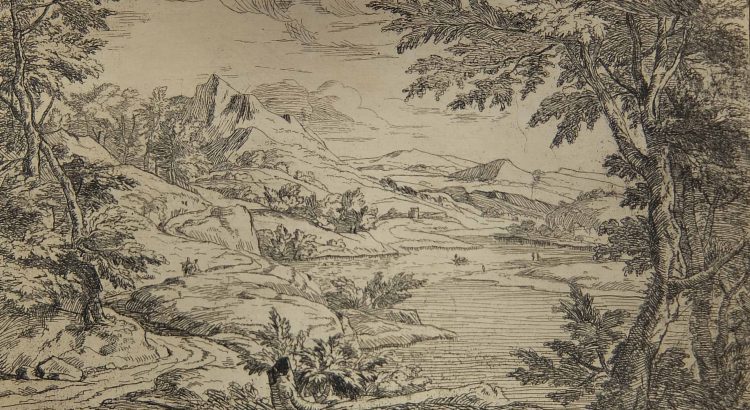Hello, my name is Caroline Thirlwell and I am a postgraduate student at the University of Edinburgh studying Global Premodern Art: History Heritage and Curation. For the past three months I have been working as an intern at the National Library of Scotland in the Rare Books Division under the supervision of curator James Mitchell. During this time, I have been cataloguing and researching portfolios of etchings and engravings from the library of the Dalrymple family of Newhailes. The library of over 7000 volumes and assorted ephemera was allocated to the National Library of Scotland in 1978. The collection was largely formed by Sir David Dalrymple, 1st Baronet, of Hailes (1665-1721), and was added to by his son Sir James (1692-1751) and grandson the 3rd Baronet of Hailes, Sir David Dalrymple (1726-1792). It is the most important contemporary collection to survive from the period of the Scottish Enlightenment.
The portfolios of etchings and engravings from the Newhailes collection include works by a variety of renowned artists including Rembrandt (1616-1669), Giovanni Battista Cipriani (1727-1785) and Claude Mellan (1598-1688). However, among these intricate works by established artists, I came across a set of engravings which lacked such detail and apparent skill and interestingly bore the signature of Sir David Dalrymple, Lord Hailes, 3rd Baronet of Hailes (1726-1792).
Some of his engravings date from 1740, when David Dalrymple was only a teenager. His artistic ambition is not something that he has been remembered for and may have been an enthusiastic adolescent hobby which never progressed beyond his early years. Possibly there was an early ambition to follow in the footsteps of the artists he so admired. As an adult, David Dalrymple would pursue a career in law, becoming an advocate and later a judge in the Court of Session in 1766. He was also an historian and antiquarian. It is unsurprising that such an intellectual would be a keen collector of literature and art, but I find it endearing to see that he fostered a personal interest in art which he never pursued professionally.
Although the engravings created by David Dalrymple are not as skillful as the other etchings and engravings in the collection, they have a certain naïve charm and can be related to by any amateur artist who abandoned their passion. A particularly interesting engraving is one in which Dalrymple attempts to capture a landscape with a river flowing under an arched bridge. In the middle ground, Dalrymple has depicted large, solid clouds which appear to sit on top of the image and give the impression of being part of the outcrops in the foreground. Rain falling from the clouds, depicted through an overuse of heavy vertical lines, obscures the rest of the scene. This was clearly experimentation rather than a perfected technique.
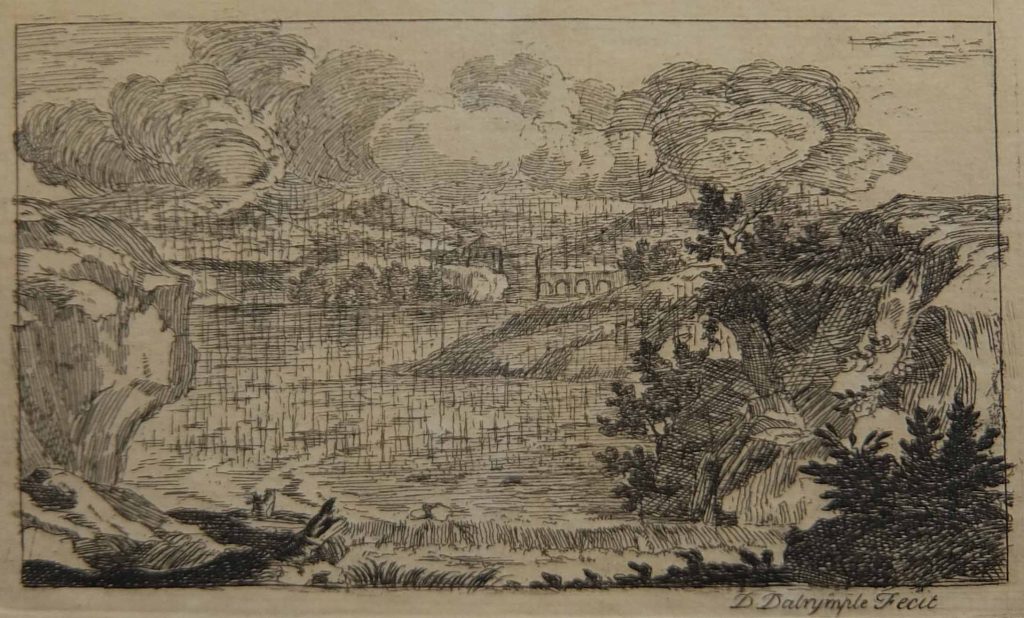
Elements of a young amateur’s imperfect technique are also evident in Dalrymple’s efforts to create the illusion of objects reflected in water. Although the viewer gets a sense of this aim in the engravings below, the rocks and trees reflected in the water lack the realism present in representations by trained artists. They do not always appear clearly as reflections but could be mistaken for actual trees or rocks themselves.

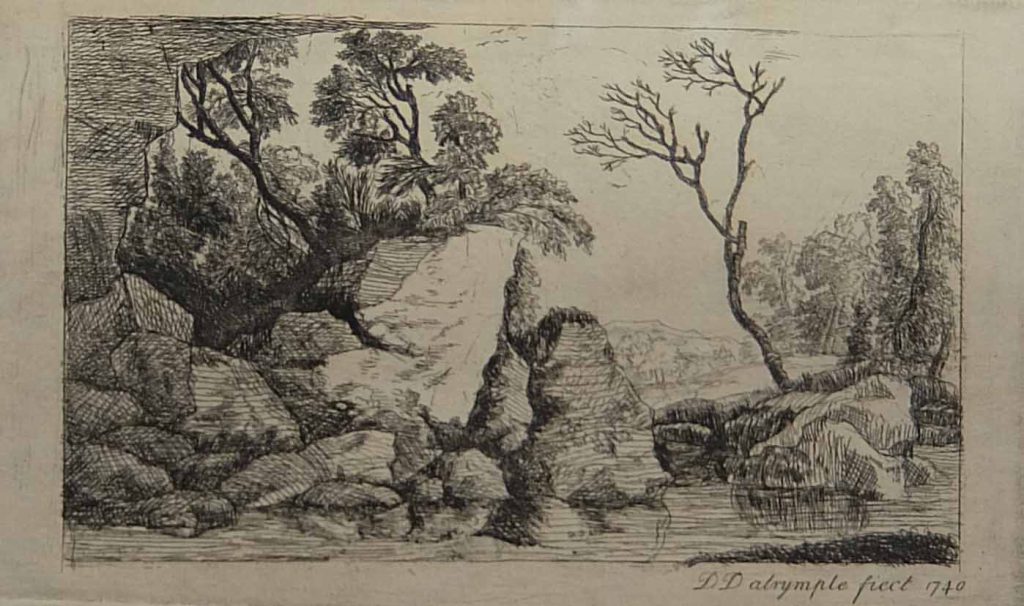
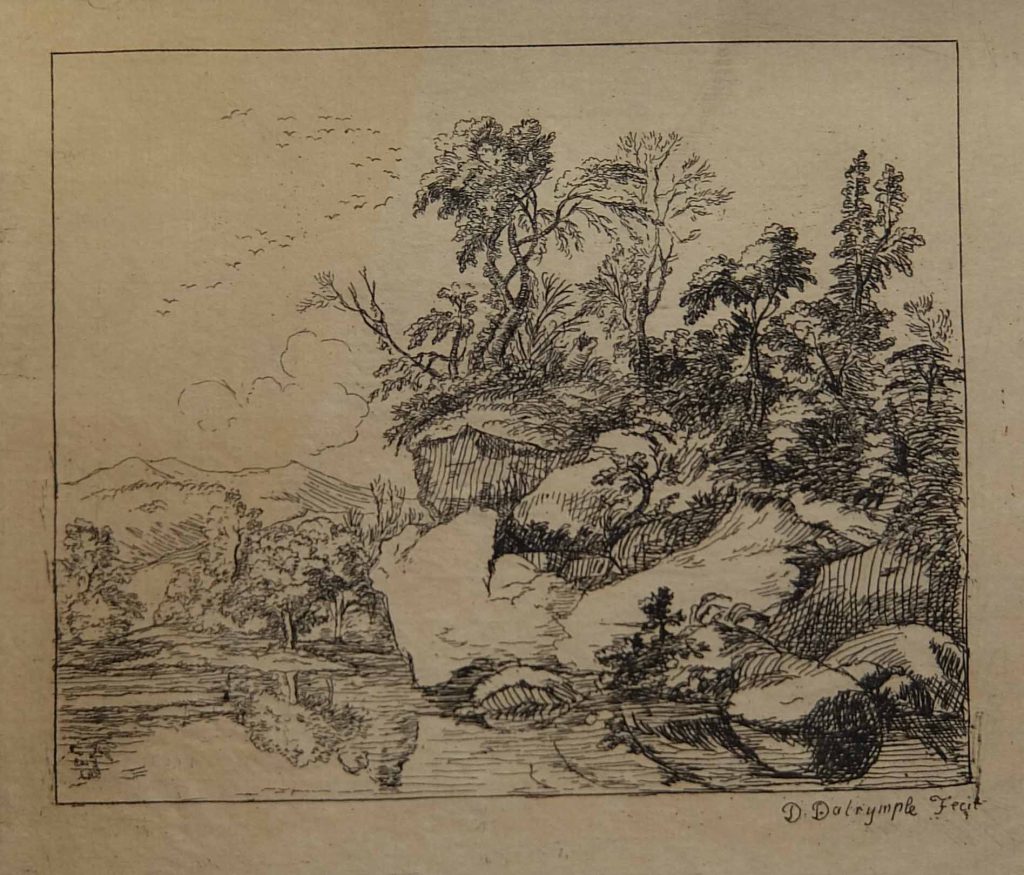
Cross-hatching is an etching and engraving technique that can be used to create subtle shading and tonal variation. In the engraving below, Dalrymple’s haphazard and ineffective cross-hatching on the rocky outcrop in the right foreground and the leaves on the trees in the background fails to create the desired effect of depth and shadow. It is as if the young art enthusiast had tired of his attempts to achieve detail and had rushed to finish the picture.
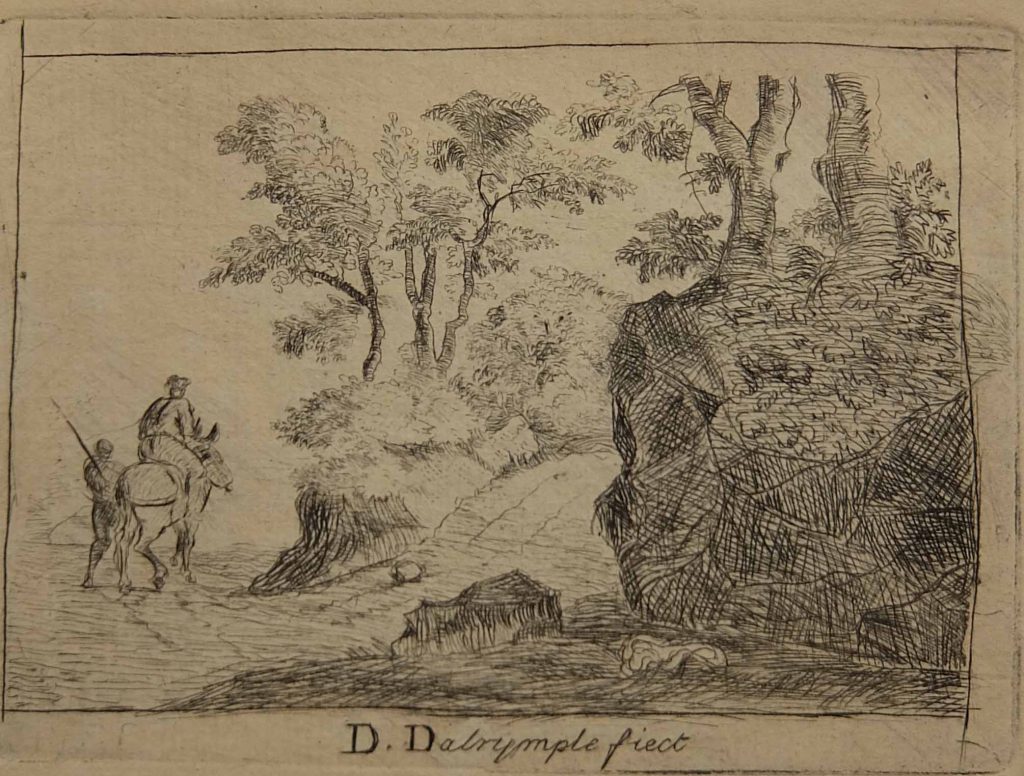
A similar attempt at cross-hatching appears below in Dalrymple’s depiction of a fortress-like structure on a hill surrounded by trees and houses. The same inconsistent scribble effect in the foreground fails to convey subtleties of shade and depth.

Although these engravings may not be particularly neat or skillful, they are extremely valuable in giving us an insight into Sir David Dalrymple, 3d Baronet of Hailes beyond his status as a lawyer, historian, and antiquary. The story they tell is one of a young man with a keen interest in art who would not go on to become an artist, but rather an art enthusiast and collector. That he included his work within his collections of etchings and engravings by renowned and talented artists suggests a desire for his passion and skill as an amateur artist to be one day acknowledged.
Further Reading:
Betteridge, Robert L. “A Library of Books Shall Be the Subject of My Meditations”: The Library of the Dalrymples of Newhailes. (Edinburgh, 2012.) Shelfmark: SU.37 (2.1 Newhailes)
Horrocks, Hilary. Newhailes, (National Trust for Scotland, 2017.) Shelfmark: PB7.218.17/9
National Trust for Scotland. The Newhailes Collection. (Edinburgh, 1997.) Shelfmark: HP2.98.4889
Hind, Arthur Mayger. A History of Engraving & Etching, from the 15th Century to the Year 1914. (London, 1923.) Shelfmark: H4.98.1127
